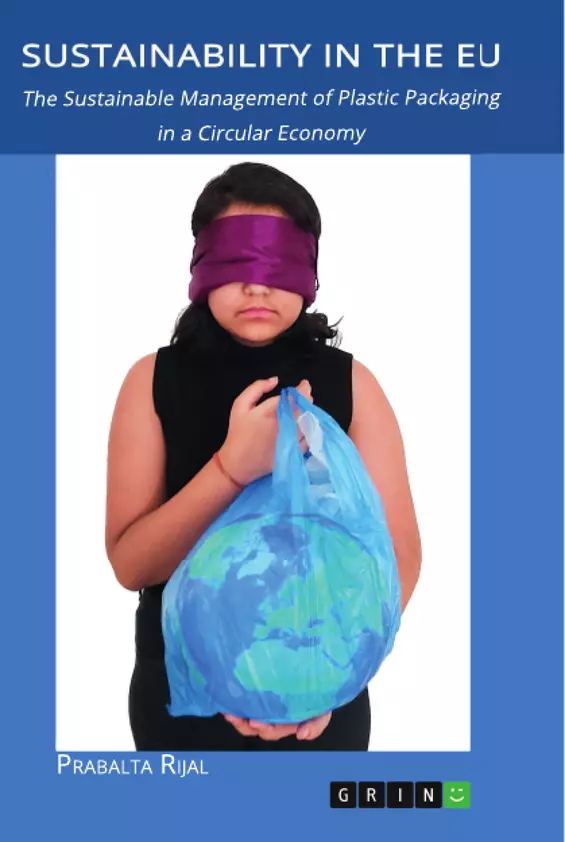This study evaluates the EU‘s strategy on Plastics by examining the problem at hand faced by both governments, as well as businesses, the economic impact the strategy, could have across the EU and if the steps the EU is following is sustainable or not and will the policy help in reaching the goal the use of 100 percent of recyclable plastic packaging by 2030, what are the major challenges the policy faces and what are the plausible solutions.
When speaking about marketing management we also need to dwell deeper into sustainable practices which can help improve not only our product sales but also help us give back to the community and the environment around us. Packaging is an important part of marketing and plastic packaging and its impact on our environment needs to be taken seriously. It is high time we start thinking about how to close the loop.
Table of Contents
- 1.0 Introduction.
- 1.1 Rationale Of The Study
- 1.1.1 Study Objective.
- 1.2.1 Research Approach.....
- 1.2.3.R coding used for Data Collection For Literature Review.
- 1.2.4.Questionnaires And Interviews..
- Chapter 2: Literature Review
- 2.0 The History Of Plastic Packaging.
- 2.0.1 The Benefits Of Plastic Packaging..
- 2.1 Plastic Packaging in The EU
- 2.1.1The Plastic Family.
- 2.2 End of Life Management of Plastic Packaging.
- 2.3 The Circular Economy.
- 2.3.1 Definition of a Circular Economy.
- 2.3.2 The Principles of a Circular Economy...
- 2.3.4 Environmental Benefits of A Circular Economy
- 2.5 EU POLICIES ON PLASTIC PACKAGING TO FOSTER A CIRCULAR ECONOMY.
- 2.5.1 The European Strategy for Plastics in a Circular Economy:.
- 2.5.2 EU Directive on Packaging: Directive (EU) 2015/720 Consumption of Lightweight Plastic\nCarrier Bags
- 2.6 Evaluation of EU's Strategy on Plastic
- 2.6.1 Challenges on implementation of Strategy..
- Chapter 3 Analysis from Primary Data Collection
- 3.1 Keyword and Sentiment Analysis (KWIC) based on R-Coding:.
- Objective of Data Collection through R-Coding
- The history and evolution of plastic packaging
- The benefits and drawbacks of plastic packaging
- The concept and principles of the circular economy
- The EU's policies and strategies on plastic packaging in a circular economy
- An assessment of the sustainability impacts of these policies
Objectives and Key Themes
This thesis aims to evaluate the sustainability impacts of the EU's policy on "Sustainable Management of Plastic Packaging in a Circular Economy." The study explores the history of plastic packaging, its benefits and challenges, and the role of the circular economy in addressing these challenges.
Chapter Summaries
The first chapter introduces the rationale and objective of the study. It provides a brief overview of the research approach, data collection methods, and the structure of the thesis.
Chapter 2 delves into a comprehensive literature review on plastic packaging. It explores the historical background of plastic packaging, its benefits, and the various methods employed for managing plastic packaging waste, including recycling, incineration, and landfilling. The chapter further examines the concept and principles of the circular economy, highlighting its environmental benefits, and analyzes the EU's policies aimed at promoting sustainable management of plastic packaging in a circular economy.
Chapter 3 focuses on the analysis of primary data collected through keyword and sentiment analysis based on R-coding. The objective of this data collection is to gain insights into the current perspectives and opinions regarding plastic packaging and the EU's policies on sustainable management.
Keywords
The key terms and focus topics explored in this thesis include: plastic packaging, circular economy, sustainability, EU policies, environmental impact, recycling, waste management, sustainable management, and data analysis.
- Quote paper
- Prabalta Rijal (Author), 2019, Sustainability in the EU. The Sustainable Management of Plastic Packaging in a Circular Economy, Munich, GRIN Verlag, https://www.grin.com/document/540591



